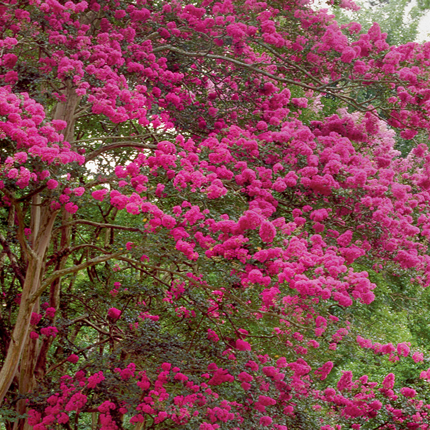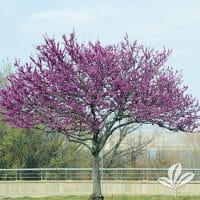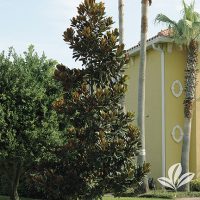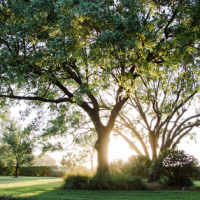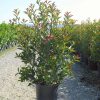Description
Crepe Myrtle – Fort Worth
The Crepe Myrtle is a small deciduous flowering shrub or tree that reaches about 25 feet tall and about 20 feet wide. They grow about 3 feet each year and showcase bright-colored blooms in the late spring through summer. Crepe Myrtles thrive in zones 6-9. These trees are perfect for Texas because they tolerate hot, sunny climates and like at least six hours of sunlight a day. Crepe Myrtles easy to care for, drought resistant, cold resistant and deer resistant. It is not a messy tree, provides shade, and is beautiful during all seasons of the year.
Add Year-Round Beauty with the Timeless Crepe Myrtle
Crepe Myrtles are beloved across the South for their stunning blooms, graceful form, and low-maintenance nature. Whether you’re looking to line a driveway with colorful flair or add a show-stopping specimen to your landscape, Crepe Myrtles are a perfect choice.
Vibrant Blooms, Long-Lasting Color
From summer through fall, Crepe Myrtles erupt with bright blossoms in shades of pink, red, white, and purple. Their flowers cluster at the tips of branches like fireworks, making them a focal point in any garden. Some varieties bloom for over 100 days, offering one of the longest flowering seasons of any ornamental tree.
We offer several varieties and sizes of crepe myrtle trees including:
- Crepe Myrtle Muskogee
- Crepe Myrtle Natchez
- Crepe Myrtle Tuscarora
A Tree That Thrives in Texas and Beyond
Crepe Myrtles are heat- and drought-tolerant once established, making them ideal for Texas landscapes and other warm climates. They flourish in full sun and well-drained soil, requiring little more than occasional watering and light pruning to keep their shape.
Planting & Care Tips
-
Plant in full sun for best blooms.
-
Water regularly during the first year to establish roots.
-
Prune in late winter or early spring to shape and remove old wood.
-
Avoid “Crepe Murder” (severe topping); proper pruning encourages healthier growth and more bloo
Stop by either our Euless or Benbrook locations to find the crepe myrtle that you’ve been looking for. See all other trees.

